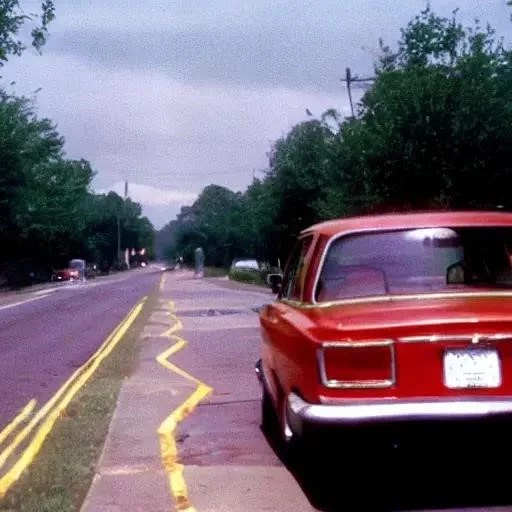Imagine this: you’re cruising through city streets, enjoying your favorite podcast, when you smoothly pull up to a red light; The traffic ahead is backed up, and you anticipate a brief pause. Suddenly, without warning, your engine sputters, shudders, and then falls eerily silent. That heart-stopping moment when your car engine dies at stop, leaving you stranded and surrounded by honking horns, is a surprisingly common and intensely frustrating experience for countless drivers globally.
This isn’t merely an inconvenience; it’s a stark reminder of the intricate mechanical symphony beneath your hood. Far from being an unsolvable mystery, this perplexing issue often stems from a range of identifiable factors, many of which are increasingly being addressed by advanced automotive engineering and smart diagnostic technologies. Understanding these root causes is the first crucial step towards preventing future roadside anxieties, ensuring a smoother, more reliable journey for everyone navigating our bustling modern world.
Here’s a breakdown of common issues leading to an engine dying at a stop, along with their typical symptoms and solutions, formatted for easy integration into a WordPress post:
| Issue Category | Specific Problem & Symptoms | Potential Solution/Action |
|---|---|---|
| Fuel System | Clogged Fuel Filter: Engine struggles, hesitates, or stalls at low RPMs due to restricted fuel flow. Fuel pump may strain. | Regular replacement (every 15,000-30,000 miles or as per manufacturer). |
| Faulty Fuel Pump: Whining noise from fuel tank, difficulty starting, loss of power, or sudden stalling. Inconsistent fuel delivery. | Professional diagnosis and replacement of the fuel pump. | |
| Bad Fuel Pressure Regulator: Incorrect fuel pressure leads to either too much or too little fuel, causing rough idling or stalling. | Inspection and replacement of the pressure regulator. | |
| Ignition System | Worn Spark Plugs/Coil Packs: Misfires, rough idle, reduced fuel efficiency, engine stalling due to inadequate spark. | Routine replacement of spark plugs; testing and replacement of faulty coil packs. |
| Air Intake System | Dirty Air Filter: Restricted airflow, leading to a rich fuel mixture, reduced power, and potential stalling. | Regular inspection and replacement of the air filter. |
| Faulty Mass Airflow Sensor (MAF): Provides incorrect air intake data, causing the engine to miscalculate fuel/air mixture, leading to stalling. | Cleaning or replacement of the MAF sensor. | |
| Idle Control System | Faulty Idle Air Control (IAC) Valve: The IAC valve regulates engine idle speed. If it’s dirty or failing, the engine can’t maintain idle and stalls. | Cleaning or replacement of the IAC valve. |
| Electrical/Sensors | Failing Crankshaft/Camshaft Position Sensor: These sensors tell the engine’s computer the position of the crankshaft/camshaft, crucial for ignition timing. Failure causes stalling. | Diagnostic scan for fault codes, followed by sensor replacement. |
| Alternator Issues: If the alternator isn’t charging the battery properly, the electrical system can fail, leading to stalling. | Testing the charging system; replacement of the alternator if faulty. | |
| Exhaust System | Clogged Catalytic Converter: Restricts exhaust flow, causing back pressure that chokes the engine and leads to stalling. | Inspection and replacement of the catalytic converter. |
For more comprehensive automotive information and maintenance guides, visit NHTSA.gov.
The Intricate Dance of Modern Automotive Systems
Modern vehicles, marvels of engineering, rely on a delicate interplay of thousands of components, each performing a vital function. When your car engine dies at stop, it often signals a disruption in this finely tuned orchestra. “Think of your car’s engine as a sophisticated metabolic system,” explains Dr. Anya Sharma, a lead automotive diagnostics engineer at a prominent EV manufacturer. “Just as a body needs a precise balance of nutrients and oxygen, an engine demands exact ratios of fuel, air, and spark to operate flawlessly. Any imbalance, even minute, can lead to immediate shutdown, particularly under the low-RPM, high-load conditions of idling.”
Historically, diagnosing such issues was a laborious, trial-and-error process, often requiring specialized tools and extensive mechanical intuition. However, the automotive landscape is rapidly transforming. Today, onboard diagnostics (OBD-II) systems in vehicles manufactured since 1996 continuously monitor engine performance, recording trouble codes that pinpoint potential malfunctions. This remarkable technological leap has empowered mechanics and even savvy DIYers to identify problems with unprecedented accuracy, dramatically reducing diagnostic time and repair costs.
The Dawn of Predictive Maintenance: AI and the Future of Reliability
Looking forward, the future of preventing your car engine dies at stop scenarios is incredibly promising, driven by the relentless march of artificial intelligence and connectivity. By integrating insights from AI-driven telematics and sophisticated sensor arrays, automotive manufacturers are moving beyond reactive repairs to proactive, predictive maintenance. Imagine your car intelligently communicating an impending issue to you, or even directly to your service center, weeks before it ever manifests as a stall.
Companies like Tesla, for instance, are already leveraging over-the-air updates and remote diagnostics to identify and often mitigate potential failures before they impact the driver. This paradigm shift means vehicles are becoming “smarter,” capable of self-assessing their health and flagging anomalies. We are entering an era where your car won’t just tell you there’s a problem; it will anticipate it, offering solutions before you ever experience that dreaded silence at a red light. This forward-looking approach promises not only enhanced convenience but also significantly improved safety and longevity for our vehicles.
Empowering Drivers: Knowledge, Vigilance, and Proactive Care
While technology advances, the human element remains paramount. Being an informed and proactive car owner is arguably the most effective defense against unexpected stalls. Paying attention to subtle cues—a slight hesitation, an unusual sound, or a dashboard warning light—can be incredibly telling. Regular maintenance, diligently following your vehicle’s service schedule, is not merely a suggestion but an essential investment in your car’s reliability and your peace of mind.
From simply replacing a clogged fuel filter to addressing complex sensor malfunctions, understanding the common culprits behind an engine dying at a stop empowers you to act decisively. The journey towards a truly hassle-free driving experience is accelerating, propelled by innovation and a shared commitment to reliability. By embracing these advancements and maintaining a vigilant approach to vehicle care, we are collectively driving towards a future where the unexpected stall at a stoplight becomes a relic of the past, replaced by seamless, confident journeys.






